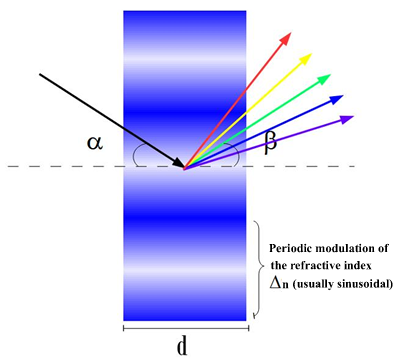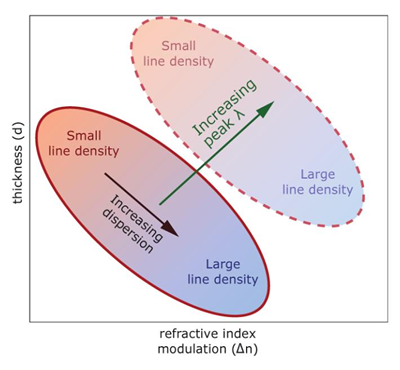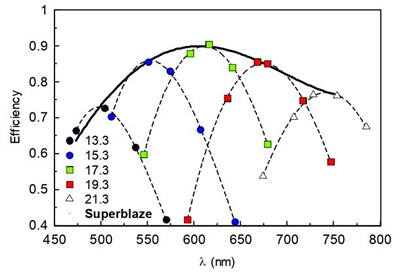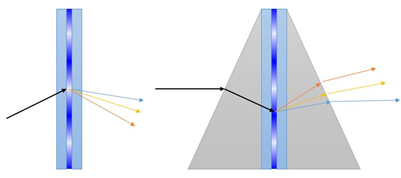| VPHGs: Volume Phase Holographic Gratings | ||||||
 Fig. 1 - How a VPHG works.  Fig. 2 - How a VPHG works. |
Introduction
Consequently, VPHGs have become the baseline in the modern astronomical spectrographs working in the visible and near infrared spectral region at low and moderate resolutions. And spectrographs are common workhorse instruments in virtually every observatory. Furthermore, large size telescopes are equipped with several instruments of that type that offer different resolving power and/or wavelength range coverages.
For high dispersion gratings (high values of line density, G), the large peak efficiency and bandwidth is achieved by maximize the Δn and minimize the film thickness d.
For low dispersion gratings (low values of line density, G), if we increase the refractive index modulation too much, the light will be sent more and more in different diffraction orders. |
|||||
 Fig. 3 - Diffraction efficiency curve (blaze curve).  Fig. 4 - Left: VPHG in transmission - Right: GRISM configuration. |
Once you have chosen the parameters, the VPHG provide a diffraction efficiency curve (blaze curve) that is peaked at the Bragg angle (angle of incidence, AOI, equal to the diffraction angle). Moreover, the blaze curve can be tuned in wavelength by changing the incidence angle obtaining the superblaze curve [Fig. 3]. |
|||||
|
| ||||||
| Web site credits: A. Bianco for VPHGs team - M.R. Panzera | ||||||
